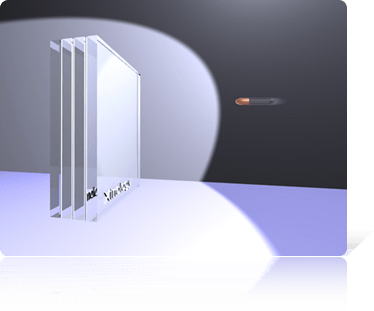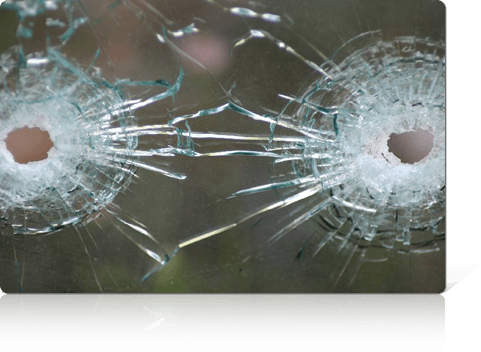Overview
Stop Bullets

Ballistic glass protection is becoming more and more important due to increasing of urban crime and terrorism. Bullet resistant glass is designed to withstand one or several rounds of bullets depending on the thickness of the glass and the weapon being fired at it.
How does bulletproof glass stop bullets? It is explained by the terms of conservation of energy. When bullet hits on armour glass surface, its energy is appeared in the form of momentum - the mass of bullet and the velocity it travels. A bullet fired at a sheet of bullet-resistant glass will pierce the outside layer of the glass, but the bullet's energy is eventually absorbed by inner glass layers. The glass will stop it before it exits the final layer.

There is also one-way bullet-resistant glass available, which has one side able to stop bullets, while the other side allows bullets to pass through it unaffected. This gives a person being shot at the ability to shoot back. This type of bullet-resistant glass is made by laminating a brittle sheet of material with a flexible material. Imagine a car equipped with this one-way bullet-resistant glass. If a person outside the car shoots a bullet into the window, the bullet would strike the brittle side first. This brittle material would shatter around the point of impact and absorb some of the energy over a large area. The flexible material then absorbs the remaining energy of the bullet, stopping the bullet. A bullet fired from inside the same car would easily pass through the glass because the bullet's force is concentrated on a small area, which causes the material to flex. This causes the brittle material to break outwards, allowing the bullet to pierce the flexible material and strike its target.
The heavier the bullet, the higher the energy it generates. The faster the bullet, the higher the energy it generates. Therefore, different configurations of bullet resistant glass are design to stop different bullets of different weapons. Simply speaking, a rifle bullet will collide with the glass with a lot more force than a bullet from a handgun, so a thicker piece of bullet-resistant glass would be needed to stop a rifle bullet as opposed to a handgun bullet.